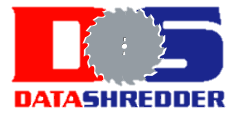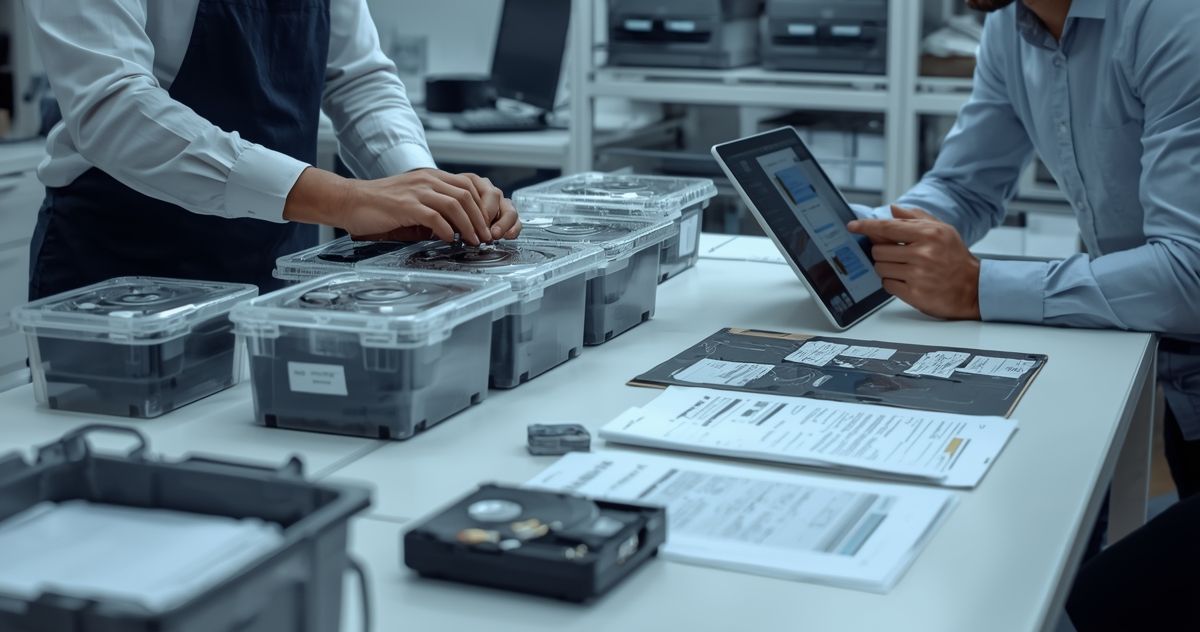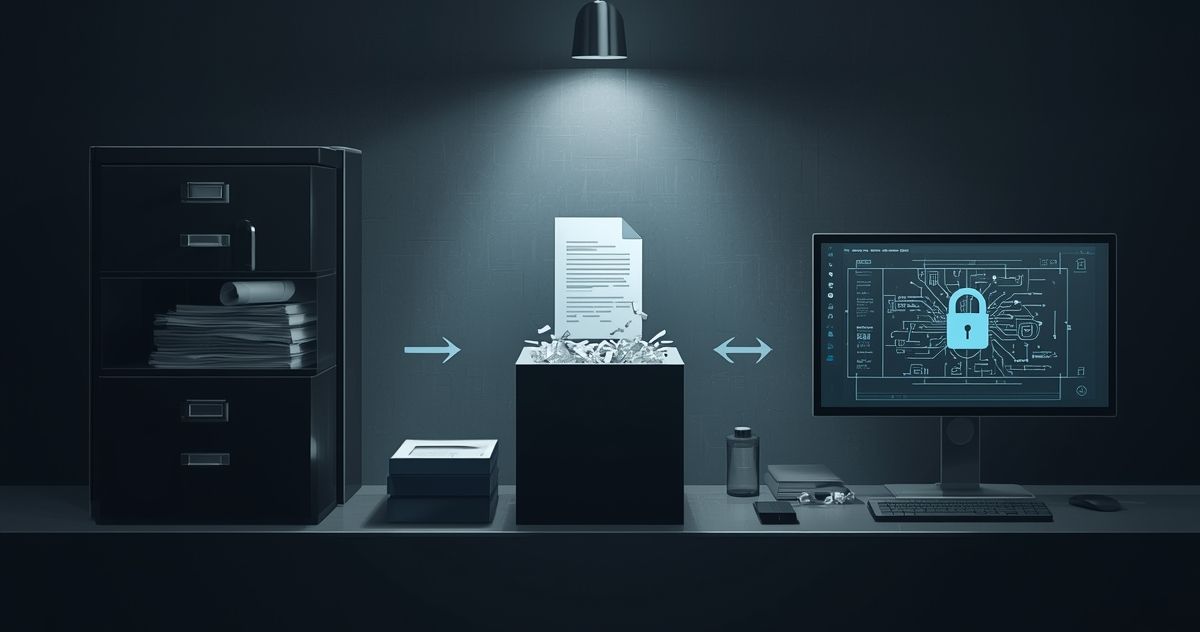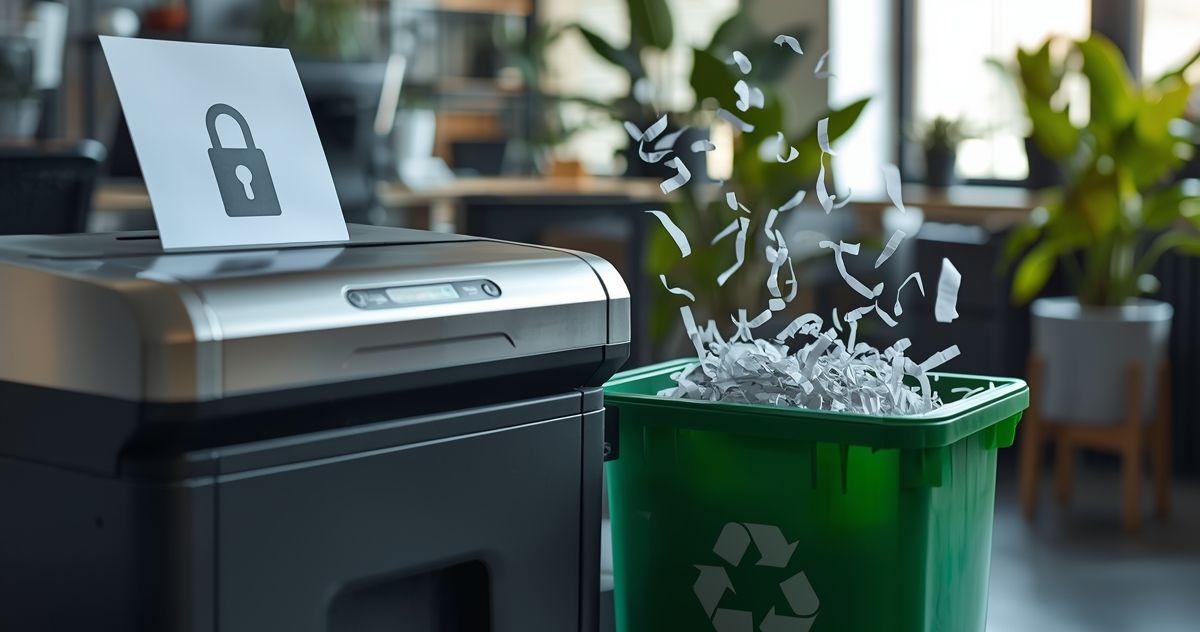Cross-Cut vs. Micro-Cut Shredding: Which One Does Your Business Need?
Cross-Cut vs. Micro-Cut Shredding: Which One Does Your Business Need?
When it comes to keeping sensitive business information secure, shredding documents is one of the simplest but most critical steps to take.
However, not all shredders are created equal. Choosing the right type of shredder for your business can make a big difference in protecting your data – and understanding the difference between cross-cut and micro-cut shredding is key.
This article will break down the differences between cross-cut and micro-cut shredders, their advantages and disadvantages, and how to decide which one is the best fit for your business.
Why Document Security Matters for Your Business
Before jumping into the technical details, it’s important to understand why shredding is vital for businesses. According to the Federal Trade Commission (FTC), improper disposal of sensitive information is one of the primary ways data breaches happen. Businesses that fail to protect sensitive records risk severe financial and reputational damage.
Shredding your documents ensures that sensitive data, such as financial information, customer records, or proprietary business knowledge, remains protected. But not all shredding methods provide the same level of security – this is where cross-cut and micro-cut shredding come into play.
What Is Cross-Cut Shredding?
How It Works
Cross-cut shredders slice paper diagonally from both corners, creating small, confetti-like pieces. Unlike strip-cut shredders, which only cut paper into long strips, cross-cut shredders offer an added layer of protection by slicing documents into smaller fragments.
Advantages of Cross-Cut Shredding
1. Moderate Security
Cross-cut shredders provide a reasonable level of document security, making them suitable for handling confidential but not highly sensitive information.
2. Faster Shredding Speed
Because cross-cut shredders create larger pieces compared to micro-cut shredders, they’re often faster and better at handling high-volume shredding tasks.
3. Lower Maintenance Needs
Cross-cut shredders are generally less prone to jams and require less frequent maintenance compared to micro-cut models.
4. Cost-Effective
Cross-cut shredders are typically more affordable, making them a popular choice for small to medium-sized businesses.
Who Is It Best For?
Cross-cut shredding is ideal for businesses dealing with moderately confidential paperwork, such as employee records, internal memos, or non-sensitive customer communications. It’s a great choice for organizations that need speed and efficiency over maximum security.
What Is Micro-Cut Shredding?
How It Works
Micro-cut shredders take document destruction to the next level by slicing paper into thousands of tiny pieces, often no bigger than the size of confetti. This creates a higher level of security, as it is practically impossible to reconstruct the original document.
Advantages of Micro-Cut Shredding
1. High-Level Security
Micro-cut shredders create pieces so small that they meet security requirements for highly sensitive data, including classified government documents.
2. Regulatory Compliance
Businesses in industries with strict compliance regulations, such as healthcare (HIPAA) and finance (GLBA), benefit from micro-cut shredders’ ability to destroy
data to a practically unrecoverable state.
3. Space Efficiency
Shredded micro-cut particles take up less space in bags and bins, reducing the frequency of disposal.
4. Environmental Benefits
Micro-cut scraps are ideal for recycling, as their smaller size makes them easier to repurpose into new materials.
Who Is It Best For?
Micro-cut shredding is the go-to choice for businesses that handle highly sensitive or confidential documents, such as legal firms, healthcare providers, and financial institutions. If your organization prioritizes absolute data security, micro-cut shredding is the way to go.
Comparing Cross-Cut and Micro-Cut Shredding Side by Side
| Features | Cross-Cut Shredding | Micro-Cut Shredding |
|---|---|---|
| Security Level | Moderate | High |
| Shred Size | 4-5mm x 30-40mm pieces | 2mm x 10-15mm particles |
| Shredding Speed | Faster | Slower |
| Volume Capacity | Suitable for high volumes | Lower due to finer cuts |
| Cost | More affordable | Higher upfront investment |
| Maintenance | Lower | Higher |
| Best For | Moderately confidential data | Highly sensitive data |
Factors to Consider When Choosing a Shredder for Your Business
1. Type of Data You Handle
Consider the nature of the information your business works with daily. If your documents contain sensitive customer details or financial data, prioritize a shredder with higher security, such as a micro-cut model.
2. Volume of Shredding
How much shredding does your business do regularly? Cross-cut shredders handle large volumes efficiently, while micro-cut shredders may struggle with heavy loads due to their slower speed.
3. Compliance Requirements
If your industry is subject to strict data security regulations (e.g., HIPAA for healthcare or FACTA for finance), micro-cut shredders can ensure compliance with document destruction standards.
4. Budget
Micro-cut shredders are typically more expensive upfront but may save money in the long run through compliance and security benefits. Cross-cut shredders are more economical, making them a better fit for businesses with tight budgets.
5. Ease of Maintenance
Micro-cut shredders require more frequent maintenance and are more prone to jams. If simplicity and minimal upkeep are important, consider a cross-cut shredder.
Additional Safety Measures for Document Disposal
No matter which type of shredder you choose, consider adding these steps for extra security:
- Separate Shredded Confetti: If possible, dispose of shredded pieces in separate bins to increase security.
- Regular Disposal Schedule: Set up a schedule for disposing of shredded documents to avoid unnecessary buildup.
- Hire Shredding Professionals: For businesses with large quantities of sensitive data, partnering with a certified shredding service can provide peace of mind and additional security.
Secure Your Business Data Today
The decision between cross-cut and micro-cut shredding ultimately boils down to your business’s unique needs. If budget and speed are priorities, a cross-cut shredder is likely the right fit. Micro-cut shredding provides unparalleled peace of mind for organizations where security is non-negotiable.
Are you ready to securely dispose of your data?
Do you have old devices lying around? Don’t wait for them to gather dust. At Data Shredder Corporation in Massachusetts, we understand how crucial it is to destroy sensitive data securely and recycle e-waste.
We're here to offer you the best data destruction, shredding, and e-waste recycling services in Massachusetts, ensuring your peace of mind while contributing to the planet's health. We also provide top-notch hardware asset management services.
Your trust is our top priority, and we're dedicated to safeguarding your information with our certified, dependable solutions. Before a security breach even whispers your name, give us a call at(508) 978-1307 or fill out our contact form.











Share On: